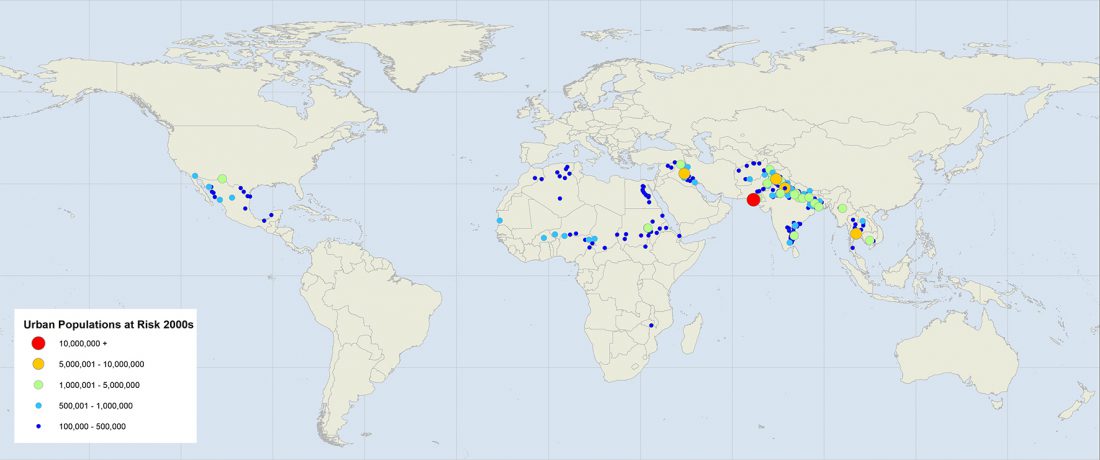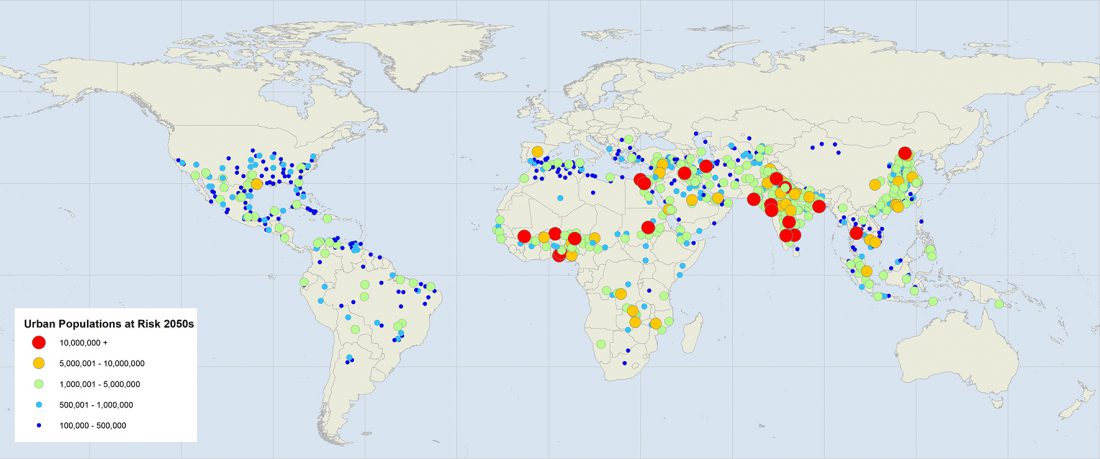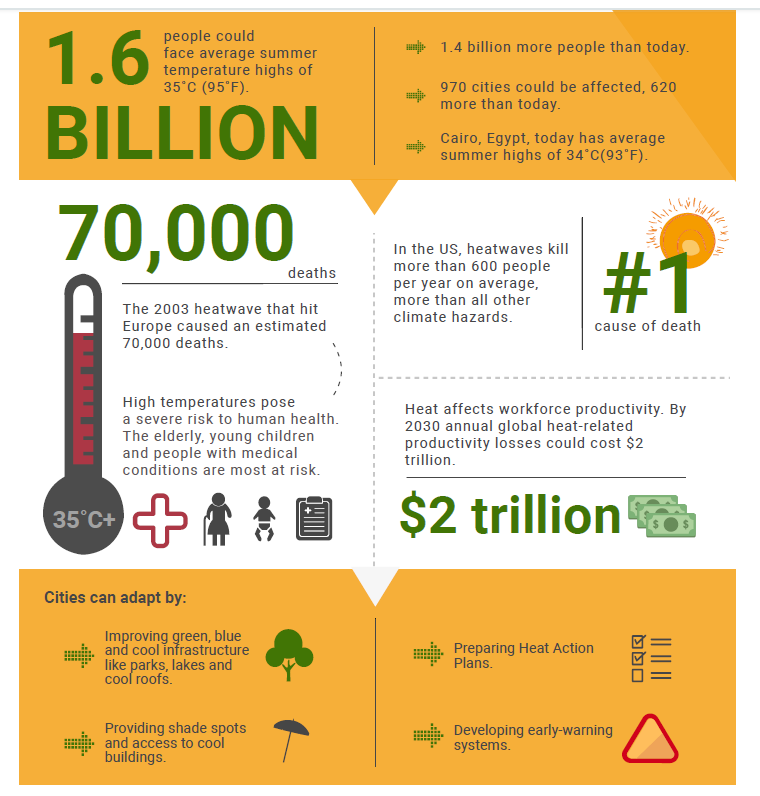We are entering new levels of extreme heat. June 2019 was the warmest June ever recorded. The Weather Channel summarized it:
At a Glance
- Four separate analyses, including from NOAA and NASA, found Earth’s warmest June on record was in 2019.
- Earth is on track for one of its warmest years dating to 1880 based on trends from the first six months of 2019.
- Among areas most above average in June were Europe, Siberia, Arctic Canada and Alaska.
- This was despite a relatively mild June in parts of the U.S.
I am writing this blog in the middle of a blistering heat wave in New York City—the humidity index here has exceeded 100oF for three consecutive days (see July 3, 2018 blog) —and 50,000 people lost their power. Not surprisingly, we are bombarded with publications about air conditioners (1.5 billion units are currently in use globally, a number expected to increase to 5.6 billion by mid-century) and severe water shortages that serve as canaries in a coal mine for the deadly impacts of climate change. Dubai has a permanent heat wave. Its hotels, cars, and shopping malls have air conditioning but 90% of the population there are workers with no such access. Even Europe is facing deadly heat waves and only about 10% of the people there are equipped with air conditioners. The Red Cross issued a 94-page report advising cities on how to protect their citizens.
A few days ago, the BBC published a list of eleven cities worldwide and their expected temperatures for the warmest months in 2050. That’s only one generation away. I compiled the BBC data and the cities’ most recent populations. I’m sure we’ll see a change in the latter number.
Table 1 – Expected temperature changes in 2050 vs. most recent populations in 11 major cities worldwide
| City | Expected Temperature Change in 2050 (oC) | Population (Millions) |
| Ljubljana, Slovenia | 8 | 0.7 |
| Madrid | 6.4 | 3.3 |
| Seattle | 6.1 | 0.7 |
| London | 5.9 | 7.6 |
| Moscow | 5.5 | 10.4 |
| Mexico City | 4.2 | 12.3 |
| New York City | 4 | 8.2 |
| Delhi | 3.5 | 10.9 |
| Istanbul | 3.4 | *14.8 (largest) |
| Beijing | 1.9 | 11.7 |
| Tokyo | 1.9 | 8.3 |
At the moment, Ljubljana, Slovenia, which ties with Seattle for the smallest population on the list, is projected to have the most drastic change—a whopping 8oC (14.4oF!), while Istanbul, with the largest population, will “only” rise by 3.4oC (6.12oF).
Figures 1 and 2 are from the C40 initiative (See July 9, 2019 and June 4, 2019 blogs); they provide a striking illustration of the projected change.

Figure 1 – Urban populations at risk, 2000s

Figure 2 – Urban populations at risk, 2050s
- The number of cities exposed to extreme temperatures will nearly triple over the next decades. By 2050 more than 970 cities will experience average summertime temperature highs of 35˚C (95°F). Today, only 354 cities are that hot.
- The urban population exposed to these high temperatures will increase by 800 percent to reach 1.6 billion by mid-century.
- Cities in countries that are less used to dealing with extreme heat are especially vulnerable. The 2003 heatwave in Europe led to 70,000 deaths.
- Extreme heat puts pressure on essential services such as energy, transport, and health. During the 2016 heatwave India’s hospitals received twice as many patients as usual.
- Heatwaves are an economic drain. They can cut goods and service outputs by more than 20 percent in sectors such as manufacturing and construction. Global economic costs of reduced productivity due could reach 2 trillion dollars by 2030.
Figure 3, from the same source, summarizes some of the consequences.
 Figure 3
Figure 3
You don’t have to wait until 2050; you can envision the expected consequences now. The link here reports on mapping the trajectories of many cities within the US as their climates change over this time period.
If you figure out a city’s current temperature and precipitation, you can assume a business as usual scenario and calculate the city’s expected change by 2050. The cities that Vox examined in the article linked above will more closely resemble other ones that are farther south (sometimes hundreds of miles away). For example: staying put in St. Louis will be equivalent to moving to Tulsa; Minneapolis, to Des Moines; Albuquerque, to Elephant Butte, etc. In other words, to escape this plight, there will likely be a mass internal migration to the north, similar to what fish do each year. Think about the impact on real estate prices: what will the dynamics be during this transitional time and after? These changes will only continue.

It is true that not all the people around the globe can afford air conditioner. there are still many countries where there is still no electricity. So, for the people from developing countries are going to affected by heat wave. According to NASA, the hottest temperature ever recorded since couple of century before was on June month of 2019. people from poor countries are more likely to die of heat wave in places like India, Bangladesh, and other many African nations. It is true that temperature is rising, and global warming is not myth. this is the common issue of the whole world not a single nation. Thus, it has to be addressed before it’s too late to control. Nice and very knowledgeable journal about current big issue facing by whole world, thank you for publishing such information.